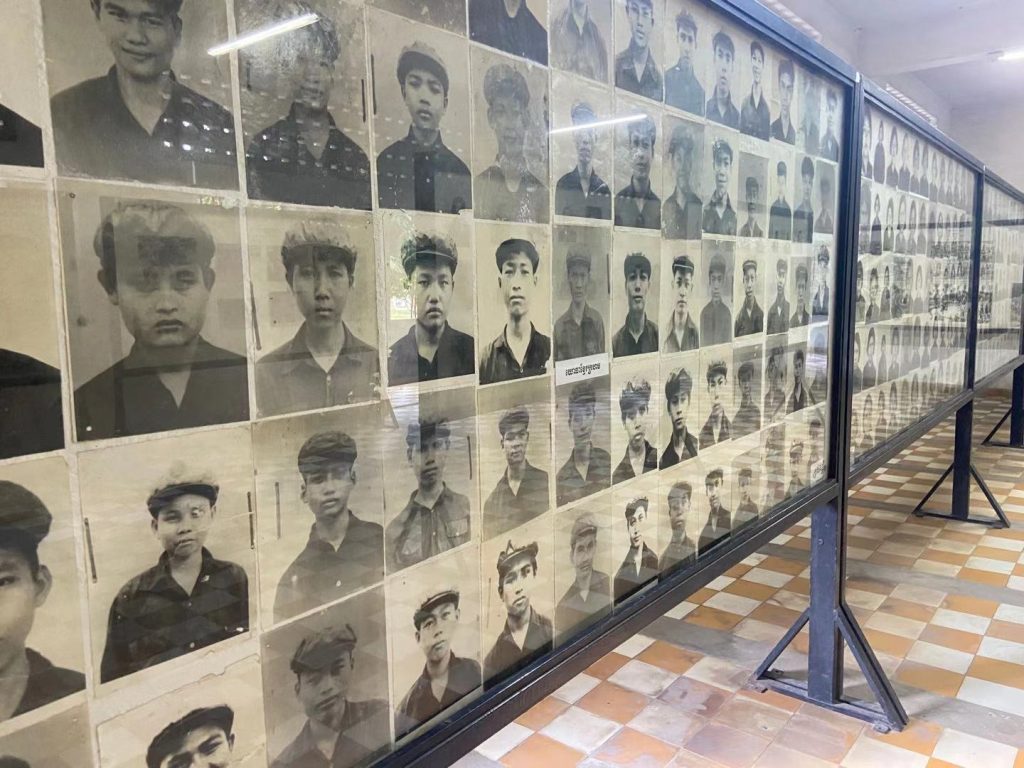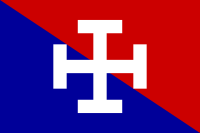Does the Khmer Rouge still exist? What we know as the Khmer Rouge existed from the 1960 formation of the Workers Party of Kampuchea until the final capture of Ta Mok in 1999. For all intents the Khmer Rouge no longer exist.
Yet, as with everything related to the Khmer Rouge and Cambodia, the actual story is a little bit more complicated.
Why were they called the Khmer Rouge?
Technically there was never any organization known as the Khmer Rouge. The term Khmer Rouge was coined by the leader of Cambodia at the time, Sihanouk to refer to the communist movement of the time. Khmer meaning Cambodian and Rouge meaning red. Cambodians Red’s.
Cambodia at the time was a one party state under Sihanouk and his Sangkum “movement”. Technically the movement was socialist, with Sihanouk reaching out to various people of the left to join his party, many of whom did. Thus the Khmer Rouge was referring to those of the left who did not support Sihanouk, but were taking part in armed insurgency.
To read about Buddhist Socialism click here.
Who were the Khmer Bleu?
The Khmer Bleu were another group who gained their nickname from Sihanouk. They were a right-wing insurgency that saw Sihanouk as being too communistic. Ironically Sihanouk had much more hatred towards them.
They were suspected of being a CIA front and conveniently “surrendered” just before the coup by Lon Nol in 1970.
To read about the Khmer Bleu click here.
Who were the Khmer Rouge
The Khmer Rouge thus refers to the communist party who began an armed struggle against the government of Sihanouk in the 1960’s.
Left-wing groups in Cambodia can be traced back to the war against the French and the Khmer Issarak and the Indochinese Communist Party. The first fully fledged communist party in the country was the Khmer Peoples Revolutionary Party, which was founded in 1951.
To read about the Khmer Issarak click here.
In 1960 there was meeting of the Khmer Peoples Revolutionary Party whereby the Maoist aligned group, most of which had been educated in Paris and had been member of the Khmer Students Association took over the party. One of these people was Solath Sar.
To read about the Khmer Students Association click here.
In 1960 the party changed their name to the Workers Party of Kampuchea, with its the party and its armed wing the Kampuchean Peoples National Liberation Army being what was originally referred to as the Khmer Rouge.
The Khmer Rouge and King Sihanouk

Despite being a strong well armed insurgency the Khmer Rouge were not in a place to take power of the country. In 1970 Sihanouk was overthrown in a CIA backed coup. This led to China mediating a coalition between their two allies, Sihanouk and the Khmer Rouge.
By this point the Khmer Rouge had changed their name (at the behest of China) to the Communist Party of Kampuchea, with its armed wing known as the Cambodian People’s National Liberation Armed Forces. Despite the name change, they were still what was known as the Khmer Rouge.
The coalition that the Khmer Rouge were part of was known as the GRUNK, or to give it its English title the Royal Government of the National Union of Kampuchea (French: Gouvernement royal d’union nationale du Kampuchéa, GRUNK; Khmer: រាជរដ្ឋាភិបាលរួបរួមជាតិកម្ពុជា).
This led many Khmer to believe they were fighting for their king rather than the Khmer Rouge, something that would later have devastating effects.
The Khmer Rouge in power
Technically Phnom Penh was liberated by the GRUNK on April 17th 1975, although the reality of the coalition was that it was completely run by the Khmer Rouge. The Khmer Rouge moved almost immediately to empire the city into the countryside.
Much has been written about why they did this, but it was as part of a plan to move the country into communism in 4 years.
You can read about what was referred to as the Super Great Leap Forward here .
From April 1975 until the Khmer Rouge declared Democratic Kampuchea in January of 1976 the Khmer Rouge regime referred to themselves as the Royal Government of the National Union of Kampuchea.
Following the declaration of Democratic Kampuchea and again under pressure from China the Communist Party of Kampuchea went “public”. It was then learned that Pol Pot was the leader, as well as the rest of the Standing Committee.
To read about Pol Pot click here
To read about the Standing Committee of Kampuchea click here .
The end of Democratic Kampuchea
Democratic Kampuchea were overthrown by a combined force of Cambodian defectors and communist Vietnamese forces in 1979. From here the Khmer Rouge were to go into exile, whilst still being the “official” government of Cambodia.
Cambodia was to be renamed the Peoples Republic of Kampuchea under Vietnamese and Soviet tutelage. The ruling party were the Khmer Peoples Revolutionary Party. This is interesting to note as this had been the name of the original communist party in Cambodia before the 1960 change to the Workers Party of Kampuchea.
This was done as a way of creating a continuity with he communist movement whilst disavowing excesses of the Communist Party of Kampuchea AKA the Khmer Rouge.
Was the Peoples Republic of Kampuchea a Khmer Rouge state?
This is a controversial question and one which could draw a a lot of different answers depending on where you sit on things. The Cambodians that helped overthrow the Khmer Rouge had by and large been part of the revolution that resulted in Democratic Kampuchea, but this does not mean that they were extremists. In act the reason why so many defected from the Khmer Rouge was because they believed in socialism, not in Poltpotism.
So, yes the Peoples Republic of Kampuchea as made up of former Khmer Rouge members, but those who associated themselves with a far more liberal and humane version of socialism. And regardless of if they were former Khmer Rouge, or not they undoubtedly helped liberate the country.
Interestingly the Khmer Peoples Revolutionary Party would eventually become the Cambodian People’s Party, something we will move onto later in the article.
What happened to the Khmer Rouge?
Despite Cambodia now being run by a communist government, the rebel movement were still referred to as the Khmer Rouge. This led to the perverse situation of a communist insurgency against a communist government from 1979-1982. Although one might argue it was Maoism against Soviet Marxism-Leninism.
Regardless it was the rebel group that were still referred to as the Khmer Rouge.
The Coalition Government of Democratic Kampuchea
Despite the Khmer Rouge killing most of his family and Sihanouk himself being lucky to survive he again was to form an alliance with the Khmer Rouge. Again whilst officially a coalition it was the Khmer Rouge who still by far the strongest fighting force.
To read about why the Khmer Rouge did not kill Sihanouk click here
By this time the party had been rebranded as the Party of Democratic Kampuchea, with its armed wing now known as the National Army of Democratic Kampuchea. The party now espoused Democratic Socialism (officially) and Pol Pt was (officially) replaced as leader by Khieu Samphan.
To read about the party of Democratic Kampuchea click here
To read about Khieu Sampan click here
The Last Khmer Rouge state
The country was renamed into the State of Cambodia in 1989, and a tacit peace was achieved in 1991. The UN were to take over the country and there were to be elections in 1993. The Party of Democratic Kampuchea renamed itself into the Cambodian National Unity Party and in theory everyone wold be reintegrated into society.
To read about UNTAC click here.
To read about the Cambodian National Unity Party click here
The Khmer Rouge were to boycott elections and retreat to the 6%, or so of the country that they still governed. Here they formed the internationally unrecognized government The Provisional Government of National Union and National Salvation of Cambodia (PGNUNSC).
To read about the last Khmer Rouge state click here .
As well as being unrecognized the Khmer Rouge were now pretty much nothing more than terrorists masquerading as a political group. They were though still a fighting force, which led to different sides the Cambodian political vacuum courting them at various times.
The end of the Khmer Rouge
The en though was nigh and the last 6 years of their existence resulted in multiple defections by senior figures, usually being granted amnesty and essentially being left to run the areas formerly under Khmer Rouge control.
By 1998 though the last state and party had been dissolved and through the win-win policy of Hun Sen the Khmer Rouge had finally been disbanded. The last holdout Ta Mok was captured in 1999 with a few followers.
To read about Ta Mok click here
To read about the win-win policy click here
Does the Khmer Rouge still exist – The Cambodian Peoples Party
Again another controversial point, with some stating that the CPP are a descendent of the Khmer Rouge. Indeed many of the leadership are formerKhmer Rouge cadres. But this clearly ignores the fact that whilst they were part of the Communist Party of Kampuchea, they were not only from the liberal part, but were also the liberators from the Khmer Rouge. The party therefore traces its lineage to the Khmer Peoples Revolutionary Party of 1951, disavowing the change to the Workers Party of Kampuchea in 1960.
Does the Khmer Rouge still exist in their former heartlands?
Yes, and no. Through the win-win policy the Khmer Rouge by and large simply swapped uniforms and joined society again. They are now part of Cambodia, but in places like Pailin and Anlong Veng a majority of the population and indeed the ruling elite are ex-KR.
To read a guide to Along Veng click here
To read a guide to Pailin click here
Is there a successor to the Khmer Rouge?
Interestingly, although unsurprisingly there has been no party that have decided to take on the lineage, or history of with the Communist Party of Kampuchea, or the Khmer Rouge.
Whilst this is perhaps not all that surprising is that there is not even a political party left in Cambodia that espouses socialism, let alone communism. The closest being the CPP, who are very market-orientated.
Does the Khmer Rouge still exist? No they do not, but they still haunt the daily lives and politics of Cambodia on a daily basis.




